Business / Fashion - 8 April 2022
Reverse Retail interview with CEO Marcus Schönhart
Circularity taken to its logical conclusion - "Society's expectation is that this offer will be made"
How does change succeed in the world of overconsumption?
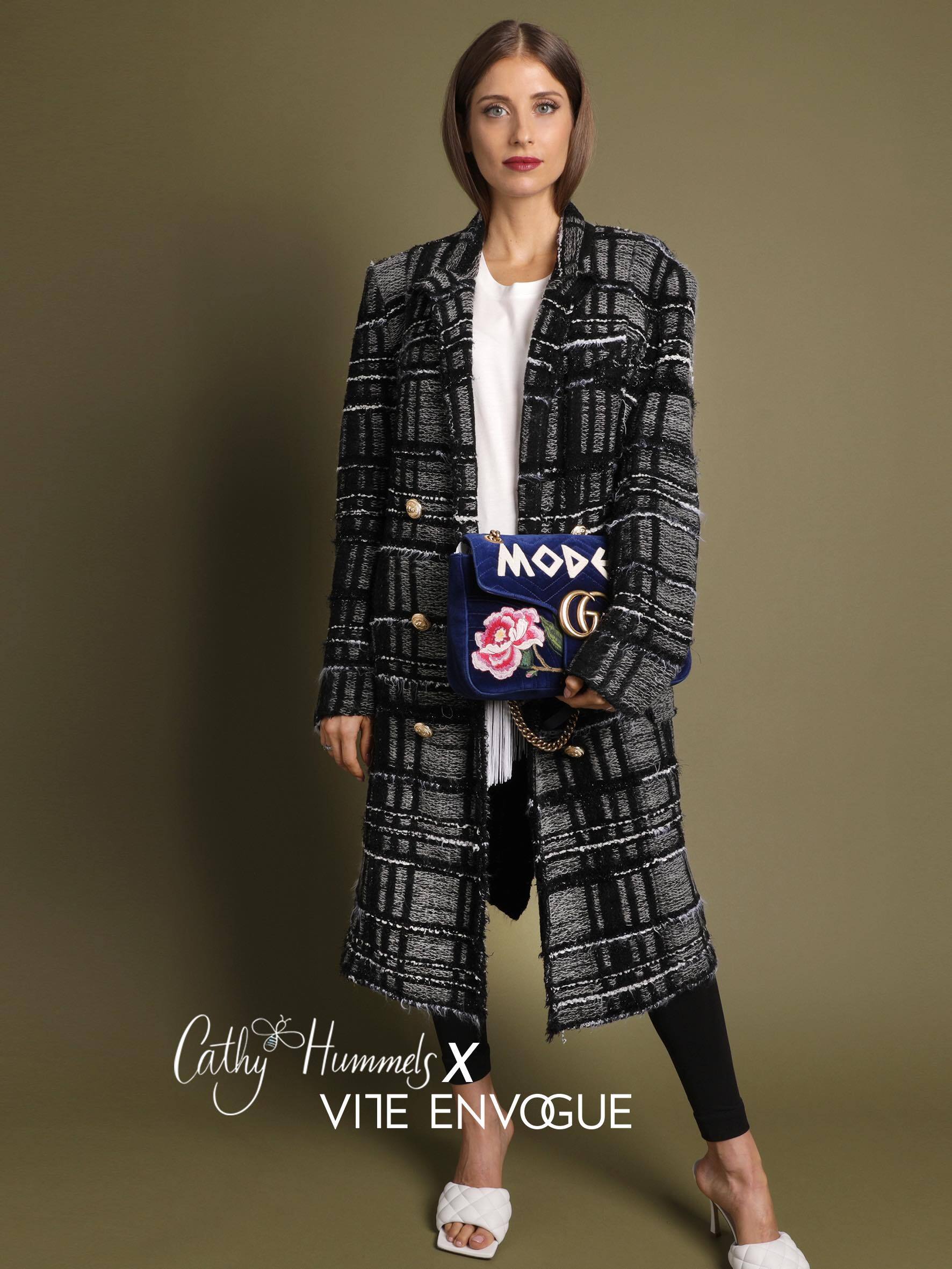
Cathy Hummels X Vite En Vogue
©Reverse Retail
Still 75 to 80% of luxury consumers are buyers of new products. But the second hand market is growing strongly and one can choose between e.g. providers like Vestiaire Collective, in which Kering recently took a stake, or Rebelle, Mädchenflohmarkt, Vinted and many others. The Hamburg second hand company Reverse Retail with Buddy & Selly for the purchase and Vite-EnVogue.de for the sales is according to its own information Germany's largest dealer of Luxury Second Hand and even has buying stations and sales areas in Germany's premium and luxury department stores, such as KaDeWe, Breuninger, Ludwig Beck or Engelhorn.
Why do department stores and luxury department stores allow themselves to carry Second Hand alongside their new goods and how did Reverse Retail manage to introduce its business concept there? Has the market really reached the point where shoppers are not saving up for their own luxury bag, but are buying someone else's old bag? Is it just budget reasons or has the sustainability idea already become so established? What does circularity actually mean in concrete terms and what paths can manufacturers, retailers and consumers take to bring about change in our world of overconsumption?
Alethea & Art Magazine met one of the two managing directors of ReverseRetail GmbH, Marcus Schönhart, who left his 30-year career in the fashion industry to bring new creative approaches to the second-hand market.

CEO Marcus Schönhart
©Reverse Retail
Alethea & Art Magazine: Mr. Schönhart, how come you decided to enter the second-hand market after your career in the fashion industry? What is so fascinating for you about this business model?
Marcus Schönhart: Through Buddy & Selly, we buy about 10% percent of the pieces that still have labels and have therefore never been worn. This shows the absurdity of the consumption that takes place today. There is a need for the industry to reinvent itself and come up with new answers - I find it exciting to be involved in and shape this process of change. I have known the classic fashion business for 30 years and have been involved in all responsibilities from sourcing to retail. Now I am in the still - niche market second hand, where there is a lot of room for reinventing creativity. 6 years ago I joined as a shareholder, at a time when Second Hand was not taken seriously. An incredible amount has changed in the last few years and in the last 24 months there has been a dramatic shift in that direction - especially with the developments on sustainability.
Circularity to the End / Reverse Retail in Detail
Alethea & Art Magazine: How did you manage to convince premium department stores, including KaDeWe, Breuninger, Ludwig Beck, Engelhorn and others, to carry the Buddy & Selly business model in their retail spaces? Who else are you cooperating with and how does the Buddy&Selly and Vite EnVogue model work in detail?
Marcus Schönhart: We have about 100 retail partners with whom we cooperate in Germany, Austria and Switzerland - we are also currently expanding enormously in Italy. In the second-hand market, there are two models - one is the marketplace model, where customers have to photograph, post, sell and ship their goods themselves.
And there is our model, which is what I call a problem solver. We buy the goods directly and bear the risk of marketing them. Customers can send their goods to our warehouse in Hamburg, where they are evaluated for resalability. This means that the part must meet 3 requirements: It must be included in our trademark register of 650 trademarks. Secondly, the condition of the part must be demonstrably resalable, i.e. the part must not have any holes, stains, etc.
Our IT - pricing intelligence judges for what price we can resell the item -this is then what our purchase price is based on. The third point is the authenticity check, which has a high value in our segment as a premium and luxury supplier - a process that is carried out in the 4 eyes principle, i.e. by 2 judging employees. We purchase a further part of the goods together with our cooperating retail partners, such as Breuninger, Lodenfrey or Ludwig Beck. The retailer invites his customers and we are on site with a purchasing team. In this case, the customer does not receive money, but a voucher from the retailer - for me, this is circularity taken to its logical conclusion!
Our partners have a very stringent sustainability policy - and the expectation of consumers is now that such an offer is made.
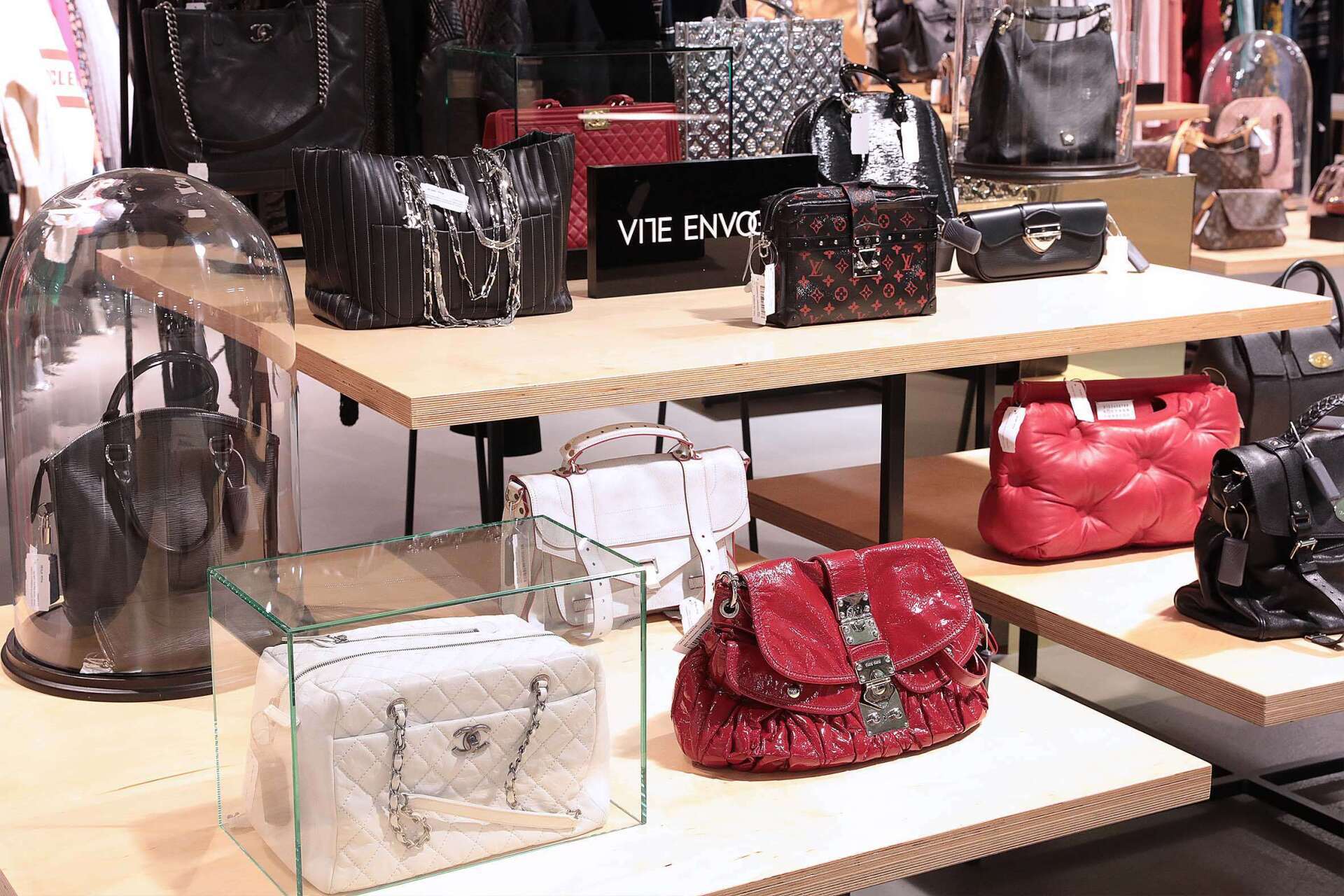
Po-up Vite EnVogue
©Reverse Retail
Alethea & Art Magazine: What would be the practical procedure if someone wanted to sell you a bag?
Marcus Schönhart: The local employee is able to assess the bag and make you an immediate offer. This takes place either at one of the purchase events or at one of our permanent purchase stations such as at Breuninger in Düsseldorf or Ludwig Beck in Munich. The customer directly receives a shopping voucher from the retail partner - and in most cases even an additional 5-10% surcharge on the voucher.
However, you can also send the part to our head office in Hamburg free of charge. You will receive an offer by email - but we do not enter into negotiations. If the customer agrees, you will receive your money promptly.
We photograph and develop the content and texts ourselves - every possible or existing trace of use on a piece is photographed in order to avoid a high return rate and to have happy and satisfied customers. In addition, we offer the possibility to return items if you don't like them or if they are the wrong size, which is generally not available on marketplaces, as well as fast delivery within 24 to 48 hours, which also distinguishes us from marketplaces.
Alethea & Art Magazine: The seller will probably not get the same price as if he sells it himself through a marketplace and takes 2 years.
Marcus Schönhart: You would be surprised. Our price is very similar and is combined with the advantage that he gets rid of the piece immediately and gets his money or equivalent. The marketplaces have fees or there are concierge models that also cost money.
Alethea & Art Magazine: For which customer is Vite-Envogue.de relevant?
Marcus Schönhart: We have female customers who can't actually afford premium luxury, or perhaps can't yet afford it, and who have their first contact with luxury brands that they wouldn't otherwise be able to buy. And there is also the strongly growing customer group that consumes with us for sustainability reasons. It is important to have a good assortment - which is the case with premium and luxury fashion, because the product quality is sustainable and has a long life cycle.
Alethea & Art Magazine: Do you give a warranty period?
Marcus Schönhart: Since it is a second-hand item, there is no legal warranty period. But in our 60-work return period, you can get a feeling whether the item suits you.
Alethea & Art Magazine: What criteria are used to select the brands?
Marcus Schönhart: We have defined about 650 brands in the premium and luxury segment from which we buy fashion, bags, shoes and accessories. We buy both men's and women's brands, because we have found that men have just as much understanding and interest in sustainability. Every six months we review our brand register - but hold our line so as not to alienate our customers. In the case of parts with a lower value, such as an H&M part that is only worth a few euros after use, I don't think it would make sense to ship it throughout Germany, which would be more expensive than the part itself.
A US technology that recognises the authenticity of bags
Alethea & Art Magazine: Do you have a quota of how many pieces are counterfeits?
Marcus Schönhart: We invest money and time in training our staff. The brands regularly change the security features of their pieces. We also have a US technology, for example, that can tell whether high-quality bags are genuine on the basis of their leather or material. With sales of several hundred thousand pieces, we have a rate of 0.02 per cent - comparable to having a fake 50 euro note in your wallet.

Vite En Vogue Boutique
©Reverse Retail
The Birkin Bag at Buddy & Selly and Vite-EnVogue
Alethea & Art Magazine: Chanel recently made headlines with price increases and limits on the number of bags to be bought per customer.
Marcus Schönhart: Chanel, Dior, Hermes are exceptional brands that have phenomenal development and performance. If they implement price increases without selling less, it means they have done everything right. This also has an impact on our channels, because the desirability also applies to the secondary market. We have bags available that are not available in the shop at all, like the Birkin Bag, which you can find on our sales floors like Breuninger, Ludwig Beck and Lodenfrey. Some customers don't even have the chance to get on the waiting list in a luxury shop and would otherwise never get it.
Alethea & Art Magazine: What are the most sought-after handbag brands at Vite-Envouge.de?
Marcus Schönhart: Louis Vuitton, Gucci, Chanel, Hermes and Dior. The second most popular product group is second-hand shoes. Marc Cain, by the way, is our strongest brand in terms of number of items.
Second Hand in the midst of luxury new goods - unthinkable 3 years ago!
Alethea & Art Magazine: How do luxury brands view this trend and what are the developments?
Marcus Schönhart: You can see from the big retail brands like KaDeWe, Breuninger, Beck, Reischmann or Lodenfrey, with whom we do sales areas, that second hand has established itself in the midst of new goods. Starting this spring, we will open a sales area of 50 sqm on the second floor of KaDeWe in Berlin, as well as a buying station - in the midst of the premium environment - unthinkable 3 years ago! We are now in preparatory talks with premium brands that have their own stores and could also buy and sell second-hand there. I think that luxury brands have to face this issue so that they can position themselves positively in the next generation, which thinks and acts even more sustainably.
Alethea & Art Magazine: What other sustainable trends are there in the fashion industry besides circularity?
Marcus Schönhart: Actually, there are not that many approaches, starting at the front of the supply chain, e.g. the use of organic cotton and sustainable production. Besides that, there are recycling processes that make the piece recyclable and finally you are at the circular business.
Alethea & Art Magazine: Do you yourself still understand consumption or is it your business model?
Marcus Schönhart: It is a well-structured business, but also a very elaborate, single-part business - we go into the commodity risk without knowing whether we will find a buyer. But we are changing the way fashion is consumed with our business model.
I've been in the industry for 30 years and for 30 years I've only known "overconsumption". There was always too much merchandise on the market - every wardrobe is too full. The more often articles are turned over and reused, the less new models have to be produced. This mission drives me.
----
The interview was conducted by Claudia Mauer.
8 April 2022
Where to find Buddy & Selly and Vite-EnVogue:
Online
and
Stationary: Breuninger, Ludwig Beck, Engelhorn, Reischmann,... From spring 2022 at Kadewe, Berlin
German version of the interview
8 April 2022
Reverse Retail Interview mit CEO Marcus Schönhart „Zirkularität zu Ende gedacht“ - „Die Erwartungshaltung der Gesellschaft ist, dass dieses Angebot gemacht wird“
„Wie gelingt der Wandel in der Welt des Überkonsums“
8 April 2022
Nach wie vor sind 75 bis 80 % der Luxuskonsumenten Käufer neuer Produkte. Aber der Second Hand Markt wächst stark und man kann wählen zwischen z.B. Anbietern wie Vestiaire Collective, an denen sich Kering unlängst beteiligt hat, oder Rebelle, Mädchenflohmarkt, Vinted und vielen anderen. Das Hamburger Second Hand Unternehmen Reverse Retail mit Buddy & Selly für den Ankauf und Vite-EnVogue.de für die Vermarktung ist nach eigenen Angaben Deutschlands grösster Händler von Luxury Second Hand und hat sogar Ankaufsstationen und Verkaufsflächen in Deutschlands Premium und Luxuskaufhäusern, wie KaDeWe, Breuninger, Ludwig Beck oder Engelhorn.
Weshalb lassen sich Kaufhäuser und Luxus Department-Stores darauf ein, neben ihrer Neuware Second Hand zu führen und wie hat es Reverse Retail geschafft, sein Geschäftskonzept dort einzuführen? Ist der Markt wirklich soweit, dass Käuferinnen nicht auf ihre eigene Luxustasche sparen, sondern die alte Tasche einer Anderen kaufen? Sind es nur Budgetgründe oder hat sich der Nachhaltigkeitsgedanke schon so etabliert? Was bedeutet eigentlich Zirkularität in der konkreten Umsetzung und welche Wege können Hersteller, Händler und Konsumenten gehen, um einen Wandel in unserer Welt des Überkonsums herbeizuführen?
Alethea & Art Magazine traf einen der beiden Geschäftsführer der ReverseRetail GmbH, Marcus Schönhart, der seine 30-jährige Karriere in der Modewirtschaft verliess, um in den Second Hand Markt neue kreative Ansätze zu bringen.
Zum Interview
Alethea & Art Magazine: Herr Schönhart, wie kommt es, dass Sie sich nach Ihrer Karriere in der Modewirtschaft dafür entschieden haben, in den Second Hand Markt einzusteigen? Was ist an diesem Geschäftsmodell so faszinierend für Sie?
Marcus Schönhart: Über Buddy & Selly kaufen wir ca. 10 % Prozent der Teile an, die noch Etiketten haben und somit nie getragen sind. Dies zeigt die Absurdität des heute stattfindenden Konsums. Es ist notwendig, dass die Branche sich neu erfindet und neue Antworten gibt - ich finde es spannend, in diesen Veränderungsprozess involviert zu sein und diesen zu gestalten. Ich kenne das klassische Modebusiness seit 30 Jahren und war involviert in allen Verantwortlichkeiten von Beschaffung bis Handel. Nunmehr bin ich in dem Noch - Nischenmarkt Second Hand, in dem es für sich neu erfindende Kreativität viel Platz gibt. Vor 6 Jahren stieg ich als Gesellschafter ein, zu einer Zeit, als Second Hand nicht ernst genommen wurde. In den letzten Jahren hat sich unglaublich viel verändert und in den letzten 24 Monaten gab es eine dramatische Veränderung in diese Richtung – insbesondere durch die Entwicklungen zum Thema Nachhaltigkeit.
Zu Ende gedachte Zirkularität / Reverse Retail im Detail
Alethea & Art Magazine: Wie ist es Ihnen gelungen, die Premium Kaufhäuser, darunter KaDeWe, Breuninger, Ludwig Beck, Engelhorn und andere, zu überzeugen, das Buddy & Selly Geschäftsmodell in ihren Verkaufsflächen zu führen? Mit wem kooperieren Sie noch und wie funktioniert das Buddy&Selly- und Vite-EnVogue-Modell im Einzelnen?
Marcus Schönhart: Wir haben ca. 100 Handelspartner, mit denen wir in Deutschland, Österreich und der Schweiz zusammenarbeiten - wir expandieren momentan zudem enorm in Italien. Im Second Hand Markt gibt es zwei Modelle - zum einen das Marktplatz Modell, in dem die Kunden selbst ihre Ware fotografieren, einstellen, verkaufen und verschicken müssen.
Und es gibt unser Modell, das, so nenne ich es, Problemlöser ist. Wir kaufen die Ware direkt an und tragen das Risiko der Vermarktung. Kunden können ihre Ware an unser Lager in Hamburg senden, wo sie auf ihre Wiederverkaufbarkeit bewertet wird. Dies bedeutet, dass das Teil 3 Voraussetzungen erfüllen muss: Es muss in unserem Markenregister von 650 Marken enthalten sein. Zweitens muss der Zustand des Teils nachweisbar wiederverkaufbar sein, das heisst das Teil darf keine Löcher, Flecken, etc. haben.
Unsere IT – Pricing Intelligenz beurteilt, für welchen Preis wir die Ware wiederverkaufen können - darauf basiert dann unser Einkaufspreis. Der dritte Punkt ist die Authentizitätsprüfung, die einen hohen Stellenwert in unserem Segment als Premium und Luxusanbieter hat - ein Prozess, der im 4 Augen Prinzip, d.h. von 2 beurteilenden Mitarbeitern, durchgeführt wird. Einen weiteren Teil der Ware kaufen wir zusammen mit unseren kooperierenden Handelspartnern an, wie z.B. Breuninger, Lodenfrey oder Ludwig Beck. Der Händler lädt hierbei seine Kund*innen ein und wir sind mit einem Ankaufsteam vor Ort. In diesem Fall erhält der Kunde kein Geld, sondern einen Gutschein vom Händler - für mich ist dies die zu Ende gedachte Zirkularität!
Unsere Partner haben eine sehr stringente Nachhaltigkeitspolitik - und die Erwartungshaltung der Verbraucher*innen ist es mittlerweile, dass ein solches Angebot gemacht wird.
———-
Alethea & Art Magazine: Wie würde ganz praktisch der Ablauf sein, wenn man Ihnen eine Tasche verkaufen möchte?
Marcus Schönhart: Der Mitarbeiter vor Ort ist in der Lage, die Tasche zu beurteilen und Ihnen ein sofortiges Angebot zu unterbreiten. Dies findet entweder auf einem der AnkaufsEvents oder in einer unserer dauerhaften Ankaufsstationen wie bei Breuninger in Düsseldorf oder Ludwig Beck in München statt. Der Kunde erhält direkt einen Einkaufsgutschein des Handelspartners - und in den meisten Fällen sogar einen zusätzlichen Aufschlag auf den Gutschein i.H. von 5-10 %.
Sie können das Teil aber auch in unsere Zentrale nach Hamburg kostenlos einschicken. Per Email erhalten Sie ein Angebot - wir gehen aber nicht in Verhandlungen. Wenn der Kunde einverstanden ist, erhalten Sie Ihr Geld zeitnah ausgezahlt.
Wir fotografieren und entwickeln den Content und die Texte selbst - jede mögliche bzw. vorhandene Gebrauchsspur an einem Teil wird fotografiert, um eine hohe Retourenquote zu vermeiden und möglichst glückliche und zufriedene Kund*innen zu haben. Zudem gibt es bei uns die Möglichkeit der Retoure bei Nichtgefallen oder falscher Größe, die es bei Marktplätzen grundsätzlich nicht gibt, sowie eine schnelle Lieferung binnen 24 bis 48 Stunden, was uns auch von Marktplätzen unterscheidet.
Alethea & Art Magazine: Der Verkäufer wird wahrscheinlich nicht denselben Preis erzielen, wie wenn er es selbst über einen Marktplatz verkauft und sich 2 Jahr Zeit lässt.
Marcus Schönhart: Sie würden sich wundern. Unser Preis ist sehr ähnlich und ist verbunden mit dem Vorteil, dass er das Teil sofort los sind und sein Geld bzw. Gegenwert bekommt. Die Marktplätze haben Gebühren oder es gibt Concierge Modelle, die ebenfalls Geld kosten.
Alethea & Art Magazine: Für welche Kundin ist Vite-Envogue.de relevant?
Marcus Schönhart: Wir haben Kundinnen, die sich Premium Luxus eigentlich nicht, oder vielleicht noch nicht leisten können und bei uns die erste Berührung mit Luxus-Marken haben, die sie sich sonst nicht kaufen könnten. Und es gibt auch die stark wachsende Kundengruppe, die aus Nachhaltigkeitsgründen bei uns konsumiert. Wichtig ist es, ein gutes Sortiment zu haben - was bei Premium- und Luxusmode der Fall ist, denn die Produktqualität ist nachhaltig und hat einen langen Lebenszyklus.
Alethea & Art Magazine: Geben Sie eine Gewährleistungsfrist?
Marcus Schönhart: Da es ein gebrauchter Artikel ist, gibt es keine gesetzliche Gewährleistungsfrist. Aber in unserer 60 tätigen Retourenfrist kann man ein Gefühl entwickeln, ob der Artikel zu einem passt.
Alethea & Art Magazine: Nach welchen Kriterien werden die Marken ausgesucht?
Marcus Schönhart: Wir haben im Bereich Premium und Luxus etwa 650 Marken definiert, aus denen wir Fashion, Taschen, Schuhe und Accessoires ankaufen. Wir kaufen Damen und Herren an, denn wir haben festgestellt, dass bei Herren genauso viel Verständnis und Interesse für Nachhaltigkeit vorhanden ist. Jedes halbe Jahr überprüfen wir unser Markenregister - halten unsere Linie aber ein, um unsere Kunden nicht zu verunsichern. Bei Teilen mit geringerem Wert, wie einem H&M Teil, das nach der Nutzung nur wenige Euro wert ist, würde eine deutschlandweite Versendung, die teurer wäre, als das Teil selbst, m.E. keinen Sinn mehr machen .
Eine US Technologie, die die Echtheit der Taschen erkennt
Alethea & Art Magazine: Haben Sie eine Quote, wieviel Stücke Plagiate sind?
Marcus Schönhart: Wir investieren Geld und Zeit in die Schulung unserer Mitarbeiter. Die Marken verändern regelmässig die Sicherheitsmerkmale Ihrer Teile. Wir haben z.B. auch eine US Technologie, die bei hochwertigen Taschen aufgrund ihres Leders bzw. Materials erkennen kann, ob sie echt sind. Bei einem Absatz von mehreren Hunderttausenden verkauften Teilen, liegen wir bei einer Quote von 0,02 Prozent - vergleichbar damit, einen falschen 50 Euro Geldschein im Portmonnaie zu haben.
Die Birkin Bag bei Buddy & Selly und Vite-EnVogue
Alethea & Art Magazine: Chanel machte unlängst Schlagzeilen mit Preiserhöhungen und Limitierung der zu kaufenden Taschen pro Kundin.
Marcus Schönhart: Chanel, Dior, Hermes sind Ausnahmemarken, die eine phänomenale Entwicklung und Performance haben. Wenn sie Preiserhöhungen durchsetzen, ohne weniger zu verkaufen, heisst das, dass sie alles richtig gemacht haben. Dies hat auch Einfluss auf unserer Kanäle, denn die Begehrlichkeit gilt auch für den Zweitmarkt. Bei uns sind Taschen verfügbar, die es im Laden gar nicht gibt wie z.B. die Birkin Bag, die sie auf unseren Verkaufsflächen wie bei Breuninger, Ludwig Beck und Lodenfrey finden können. Manche Kunden haben in einem Luxus Geschäft nicht einmal die Möglichkeit, auf die Warteliste zu kommen und würden sie sonst nie erhalten.
Alethea & Art Magazine: Welches sind die begehrtesten Handtaschen Marken bei
Vite-Envouge.de?
Marcus Schönhart: Louis Vuitton, Gucci, Chanel, Hermes und Dior. Die zweitstärkste Produktgruppe sind gebrauchte Schuhe. Marc Cain im übrigen ist unsere Stückzahlen stärkste Marke.
Second Hand inmitten von Luxus Neuware - vor 3 Jahren im Ansatz undiskutierbar
Alethea & Art Magazine: Wie stellen sich Luxusmarken zu diesem Trend und wie sind die Entwicklungen?
Marcus Schönhart: An den grossen Handelsmarken wie KaDeWe, Breuninger, Beck, Reischmann oder Lodenfrey, mit denen wir Verkaufsflächen machen, sieht man, dass sich Second Hand inmitten von Neuware etabliert hat. Ab diesem Frühjahr werden wir im KaDeWe in Berlin im zweiten Geschoss eine Verkaufsfläche von 50 qm, sowie eine Ankaufsstation eröffnen - inmitten des Premium Umfeldes - vor 3 Jahren im Ansatz undenkbar! Wir sind jetzt in vorbereitenden Gesprächen mit Premiummarken, die ihre eigenen Stores haben und dort auch Second Hand kaufen und verkaufen könnten.
Ich denke, dass Luxusmarken sich diesem Thema stellen müssen, damit sie sich in der nächsten Generation, die noch nachhaltiger denkt und handelt, entsprechend positiv positionieren können.
Alethea & Art Magazine: Welche nachhaltigen Trends gibt es in der Fashionbranche neben Zirkularität noch?
Marcus Schönhart: Eigentlich gibt es nicht soviel Ansätze, beginnend vorne in der Lieferkette, z.B. bei der Verwendung von Biobaumwolle und nachhaltiger Produktion. Daneben sind es Recycling Prozesse, die das Teil wiederverwertbar machen und schliesslich ist man beim zirkularen Geschäft.
Alethea & Art Magazine: Haben Sie selbst noch Verständnis für den Konsum oder ist es für Sie Ihr Geschäftsmodell?
Marcus Schönhart: Es ist ein durchstrukturiertes Business, aber auch ein sehr aufwendiges, Einzelteil Business - wir gehen ins Warenrisiko, ohne zu wissen, ob wir einen Käufer finden. Wir verändern aber mit unserem Geschäftsmodell die Art des Fashionkonsums.
Ich bin seit 30 Jahren in der Branche und kenne 30 Jahre lang nur „Überkonsum“. Es war immer zu viel Ware am Markt - jeder Kleiderschrank ist zu voll. Umso häufiger sich Artikel drehen und weiterbenutzt werden, umso weniger müssen neue Modelle produziert werden. Diese Mission treibt mich.
————
Das Interview führte Claudia Mauer.
8 April 2022
Wo Sie Buddy & Selly und Vite-EnVogue finden können:
Online
buddyandselly.com und
Vite-EnVogue.de Stationär: Breuninger, Ludwig Beck, Engelhorn, Reischmann,… Ab Frühjahr 2022 im Kadewe, Berlin
ALETHEA & ART MAGAZINE recommends:
8 April 2022

Fashion / Business - 1 April 2022
Sheltersuit - charity, real fashion circularity, life stories and a also new fashion initiative
Sheltersuit Foundation is a non-profit organization founded in 2014 by Bas Timmer to develop products that can alleviate the symptoms of homeless people. The Sheltersuit and the Shelterbag were created.
Sheltersuit Founder Bas Timmer
©Tony Docekal
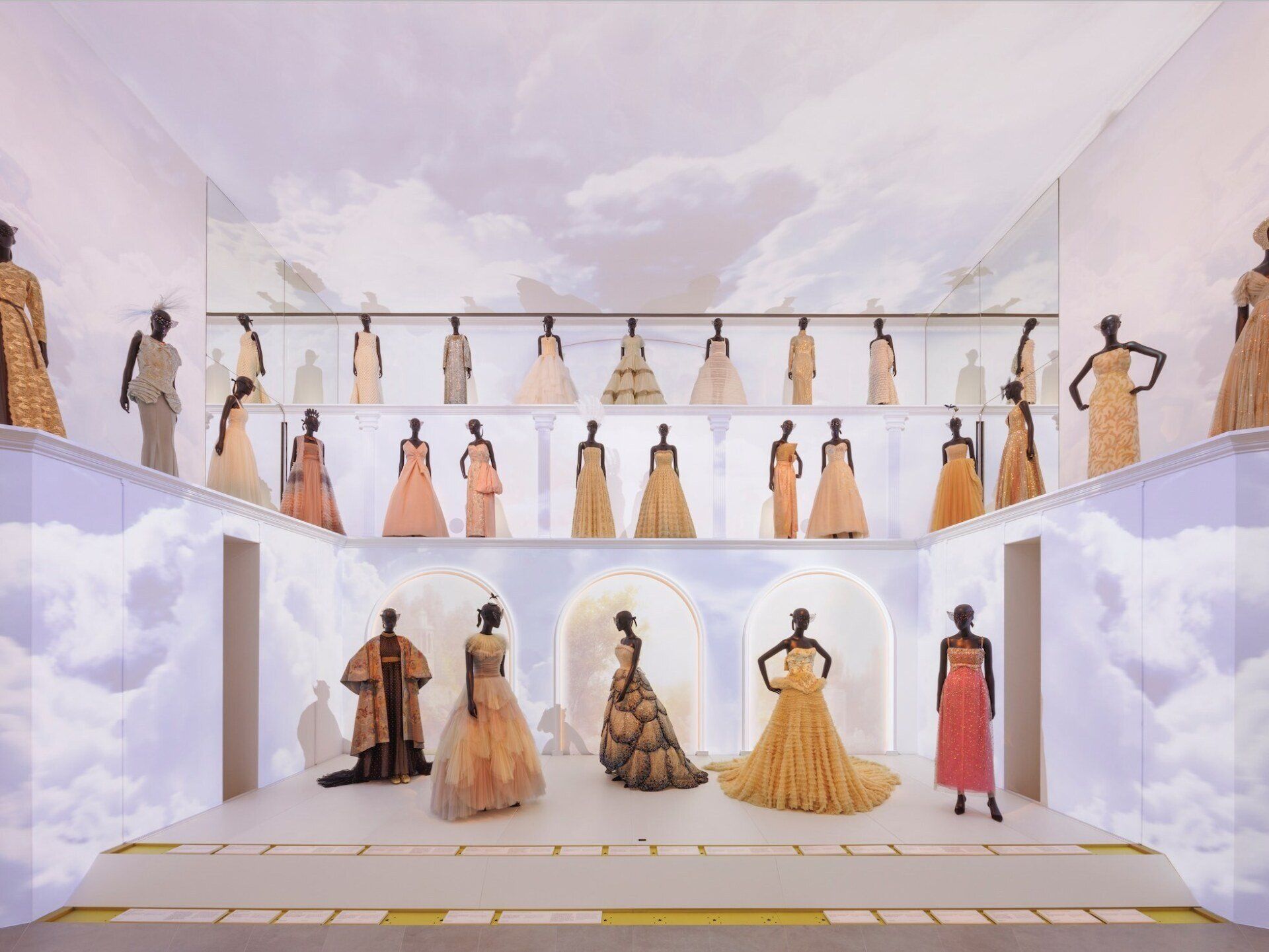
Lifestyle Calendar/ Fashion & Jewelry 16. March 2022 - by C. Mauer
La Galerie Dior, 30 Montaigne opens its doors and displays the creations of fashion designer Christian Dior and his six successors. For Dior connoisseurs, La Galerie Dior is like a dream come true. On the other hand, those who have only known Dior from expensive boutiques, handbag models or cosmetics will be surprised. They enter a universe of visions, history and the mirror of society. Suddenly everything becomes clear - an empire of style and elegance is not created overnight.
Room 10 - Dior Galerie and Dior Ball -©Kristen Pelou ©Dior
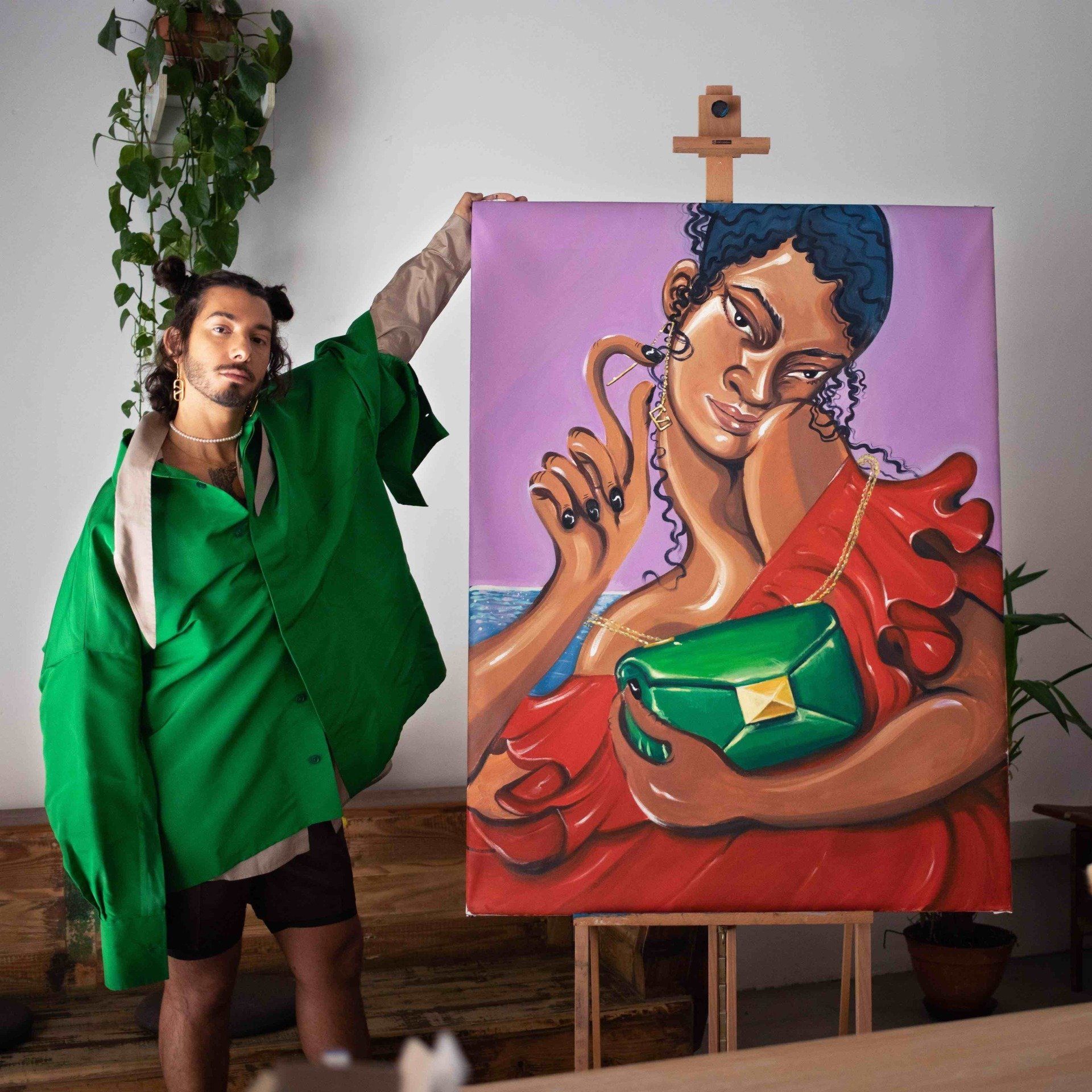
Art 16. March 2022
Valentino On Canvas - Art is the deepest touch of emotions - Pierpaolo Piccioli, Maison Valentino March 2022
3 Artists, Emilio Villalba, Giorgio Celin and Oh de Laval created a work that reproduces the Valentino Garavani One Stud bag from the Valentino Rendez-Vous collection.
GIORGIO CELIN -Courtesy of Maison Valentino / Ph. Erik Bruce
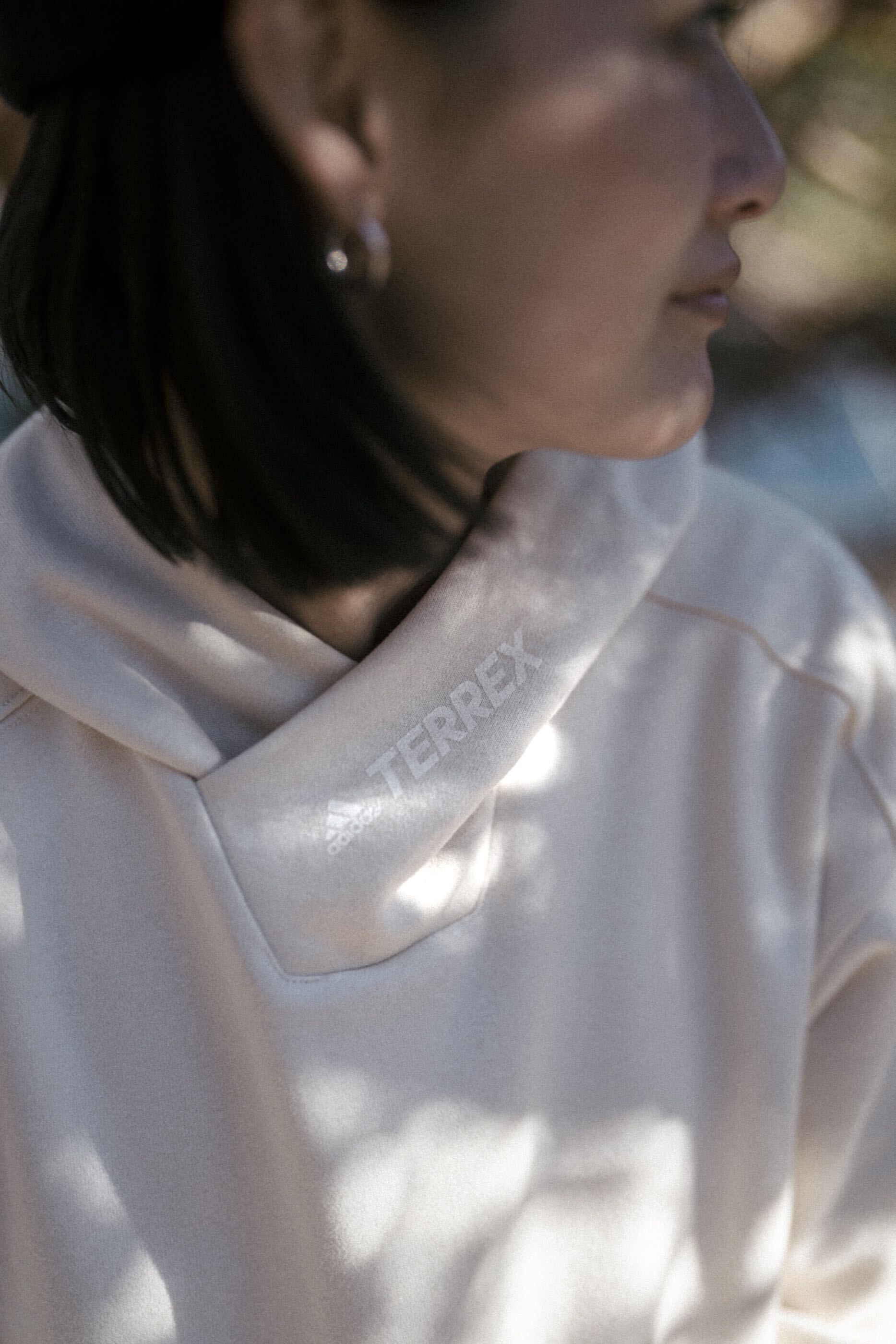
Fashion / Environment - 10 March 2022 by C. Mauer
SPINNOVA® An interview on the future of fashion
On February 10, Spinnova and adidas unveiled their first collaboration product, the TERREX HS1 hoodie. What path can textile producers and designers take to influence the world?
Finnish manufacturer Spinnova will help decide this path, saying, the best way to influence the world is not to. Alethea & Art Magazine received an exclusive interview from CEO Janne Poranen.


